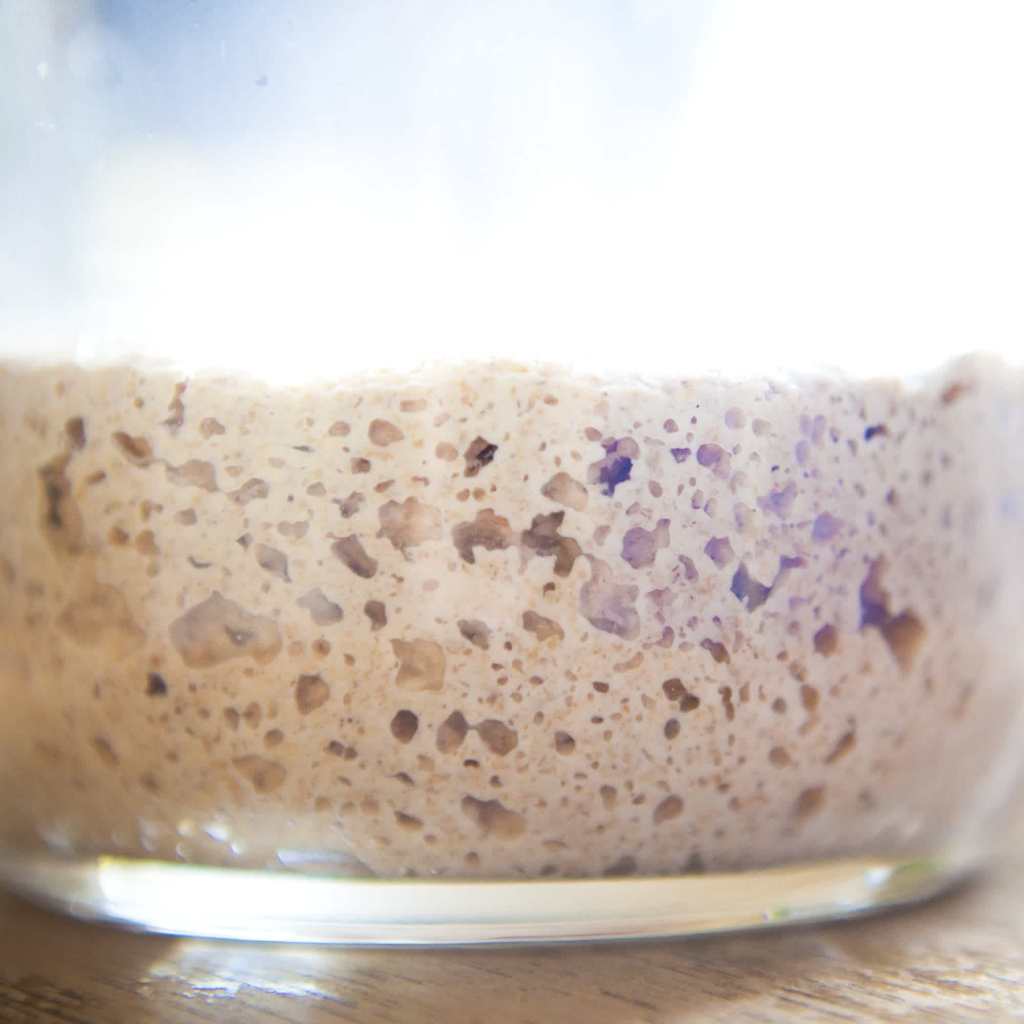A sourdough starter is the basis for all the delicious things you’re baking in your kitchen: bread, waffles, pizza crust, etc. Best of all, a sourdough starter only requires two ingredients and a whole lot of patience. A sourdough starter, if you’re unfamiliar, acts as a sort of yeast for dough if you want to use an alternative to traditional yeast (or if you just can’t find any yeast in the store). It’s a combination of flour and water that’s left to grow over a couple days, and we’ll break down exactly how to do it.
Related: 12 Sweet and Savory Bread Recipes You Absolutely Need to Make
Day 1
To start, you need 1 cup of whole wheat flour and 1/2 cup cool water. Combine the two in a container that’s at least a quart large, so the starter has room to grow. For this first step, you need to be sure to use whole wheat flour, because it has more of the “wild yeast” in it naturally. If you absolutely have to use bleached flour, just expect this process to take a little longer. You also want to be sure to put your starter in a nonreactive container like glass or hard plastic.
Day 2
Combine these two in the container, cover loosely, and leave in warm room temperature for a day. On the second day, regardless of how much activity you’ve seen with your starter, scoop out half of it and get rid of it. It’s time to feed the remaining half. Add another cup of flour (this time you can use regular flour) and 1/2 cup cool water. Mix it all together, cover, and let sit in room temperature again for a day.
Days 3-5
Starting on the third day, you’ll feed the starter twice daily at even intervals for two days. For each feeding, add 1 cup flour and 1/2 cup cool water. At this point, it’s optional to pare down how much starter you have, so you’re not growing a huge amount of starter. You can remove half of the starter before feeding it, but it’s not required. At the end of the fifth day, the starter should have doubled in size.
Give your starter one last feeding, and let it sit for at least six hours. From here, you can take out whatever you want to use immediately and store the rest. To store it, feed it once more, and let it rest for another six hours, then put it in a container with a proper seal and store it in the fridge for up to two weeks. You can continue feeding it in the same manner about once per week to keep it intact.

